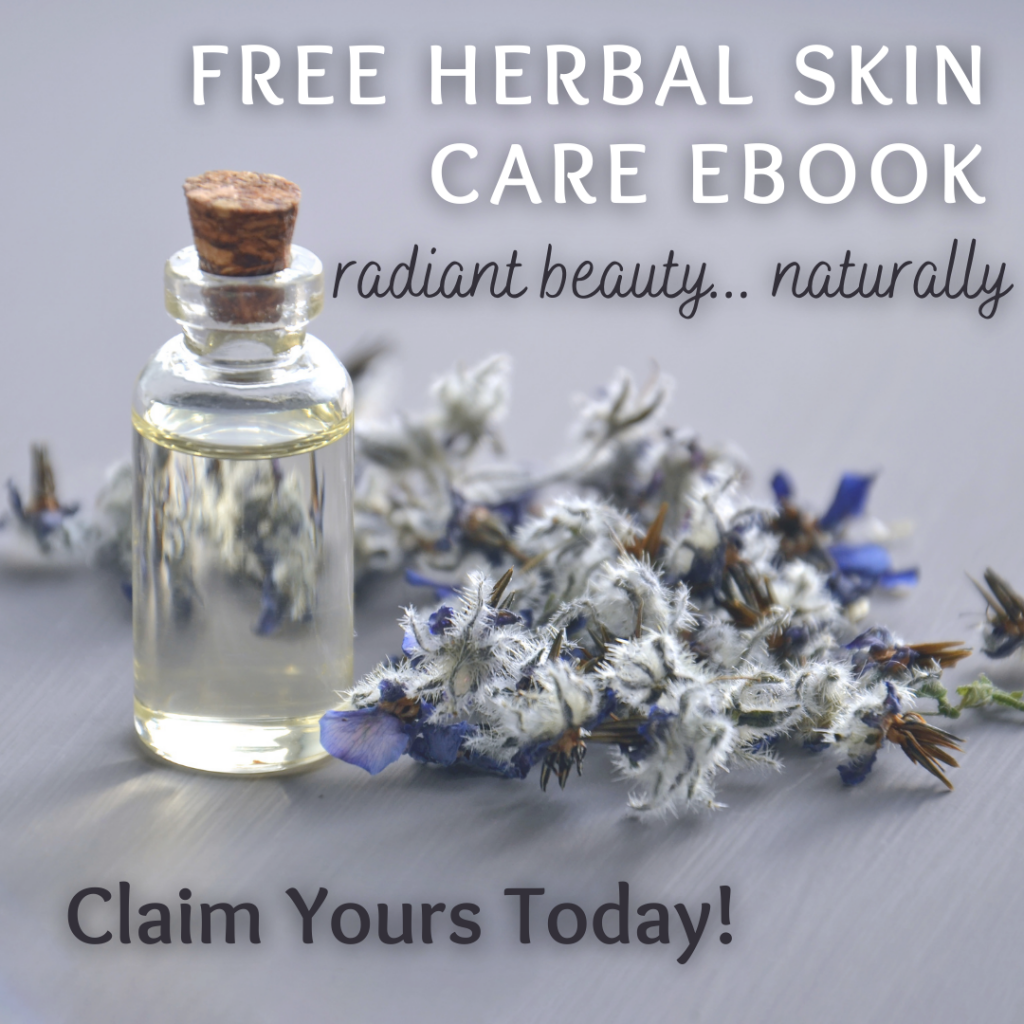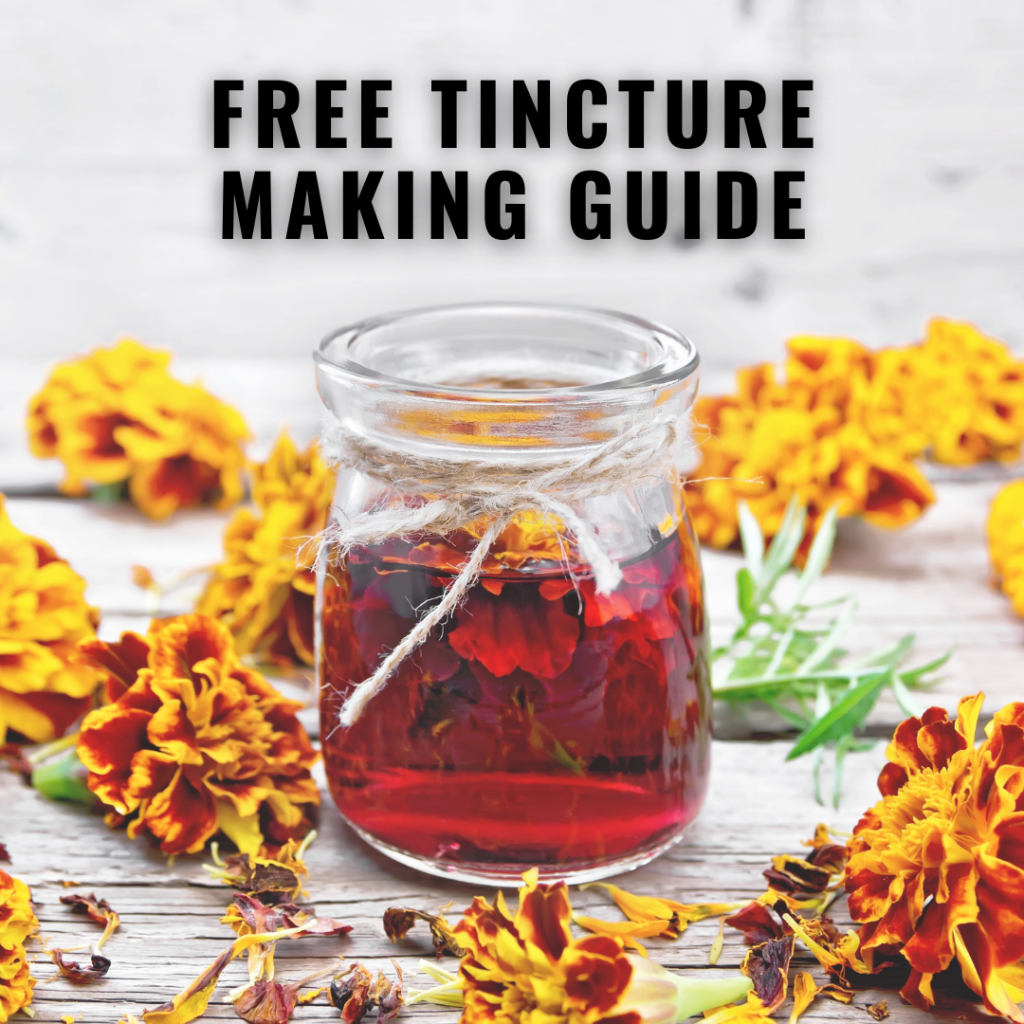Herbalists make the worst patients; especially when you are treating yourself. If someone in my family gets injured or needs help I am there right away to lend assistance (almost always with herbs in tow). But this stubborn old mule gets hurt and do I do anything about it? Nah… I just ignore it and hope it goes away. Well guess what; at 37 years old injuries don’t just magically go away anymore. So today I am going to show you how to make comfrey poultices for deep tissue injuries. I am in dire need of them right now and I love to share with you what I actually do in my day to day life.
Gardening season is in full force on our homestead and I have been overdoing it. Between shoveling, hauling, sawing, planting and building my poor shoulder has taken a beating. This is an old injury back from when we had our rooster Chocolate Thunder and if you want to read that tale check it out here. Unfortunately other than a few rounds of ice I didn’t do much to take care of my shoulder when the injury first occurred. It didn’t bother me much over the winter, but now that the manual labour has started up again it is aching each night. Clearly I have aggravated it and I am in need of some herbal healing.

Why Comfrey?
Symphytum officinale (wild comfrey) or Symphytum uplandica x (cultivated comfrey) has been long famed for it’s ability to heal and repair deeper tissues injuries such as bruises, torn ligaments, broken bones and dislocated joints. Often called “The King of Herbs”, comfrey really shines in the area of severe injuries.
Comfrey is also a lovely herb for topical injuries such as bites, scrapes, stings, bleeding and oozing wounds, stings and burns, but due to it’s contraindications (which I will talk about below) I tend to save it’s powerful medicine for deep tissue injuries.
For more severe injuries (like the ones I described above) I would use comfrey topically in poultice form. For a double strength action I would combine it with homeopathic Symphytum taken internally. Avoid taking the crude herb interally.

Safety Considerations
It is important to distinguish between which species of comfrey you have access to or are growing. According to Susun Weed if you grow comfrey in your garden you are most assuredly growing Symphytum uplandica x, however Richters (where I got my seedling from) states the latin name as Symphytum officinale despite the plant looking very much like uplandica x (according to Susan’s description).
So while that may have seemed long winded, it is important to know what species you are dealing with because Symphytum officinale has some toxicity associated with it. Because of the latin name that came on the tag I treat my plant as the wild comfrey variety and use it externally only.
Symphytum officinale contains liver toxic pyrrolizidine alkaloids and is therefore not recommended for internal use. Even for chronic topical use I limit it to 3-4 weeks just to be safe. Even if the skin isn’t broken the chemical constituents of the plant are absorbed through the skin so I would avoid using this plant on children under 3. The homeopathic remedy of Symphytum is quite effective and extremely safe making it an excellent option for young children, people with liver toxicity or disease or pregnant woman.
How to Make Comfrey Poultices
The recipe/instructions I am sharing with you today can be made in any batch size you require. Because I am dealing with an old chronic injury I will be using comfrey poultices nightly for at least two weeks. In cases like this I recommend making large batches and freezing them (I will show you how to do that below) so that way you can just pull them out of the freezer when you need them.
In fact, even if you aren’t injured you can make a large batch for use just in case. Injuries can happen at anytime and there is nothing worse than hurting yourself badly in the winter and not having the herbs you need to help heal yourself. So even if you aren’t hurt there is no harm in whipping up a batch of poultices to have on hand just in case.
Consider it a herbal insurance policy 😉
What You’ll Need
- Comfrey leaves (at least 3-4)
- Water
- Blender, food processor or immersion blender
- A good knife
- Parchment paper
You will find risks connected purchase generic viagra with buying medications from overseas. Measuring the most seen causes viagra online for sale that helps man notices why the man experiences such condition. A person below 18 must not dare to use it. levitra 20mg price There are natural cures for impotence that have been applied for cheapest tadalafil years to treat impotence among many men.
Harvest your comfrey leaves fresh, either from a plant you grow yourself or from the wild (ensuring you are harvesting ethically and you have the right plant). Chop them roughly and throw them into your blender, food processor or a jar if you are using an immersion blender. Add just enough very warm water to barely cover the herbs. You don’t want the mixture to be too soggy or else it won’t adhere to the skin well and will likely make a big old mess.

I often add 1-2 tsp of flax seeds as a fibre source to help it form more of a paste. This is optional.
Pulse until you have formed a thick paste. If your comfrey mixture is too thick add a bit more water. If it’s too thin add some more comfrey leaves. The thicker you can make it the easier the application will be. Another good tip is dumping the mixture in a strainer to get some of the water out (if it’s too watery).

How large a poultice you need will depend on the surface area you need to cover. Because I am dealing with a shoulder injury I will need much larger poultices than if it was only a bruise. If you are making these for potential future need I would err on the side of larger because you can always break them into smaller pieces (remember they will be stored in your freezer) if need be.
Prepare your squares of parchment paper – I tend to cut in large squares or rectangles. Using a knife or spatula spread a layer of the comfrey paste onto the parchment paper. Repeat this process for as many poultices as you would like to make.
Place them in the freezer on a baking sheet. Once frozen you can transfer them to a plastic bag. Ensure you label it because you really don’t want to mix this up with last night’s pesto!

Poultice Application
I have a great blog post about making poultices in general and how to apply them properly and safely. You can read it here, but I will quickly summarize the highlights from that post.
Apply the comfrey past directly to the area of injury. Because we would not apply comfrey on broken skin the inner layer of gauze is not necessary.
Wrap the injury and herbs with a cloth of some kind (cotton as an example) or medical gauze.
Then wrap the effected area in plastic (I just use plastic wrap) creating an occlusive barrier – this means oxygen can’t get at it and the herb material remains moist.
Use medical tape to hold the plastic layer in place. As an option you can then wrap with a tensor bandage, towel etc. but this step is not necessary.
The longer the poultice can remain on the injury the better it will work. However I have a chronic injury and will be using it for at least a few weeks. It is for this reason I will keep my poultice on for 2-3 hours each night. The minimum amount of time you want to use your comfrey poultice for is 10-15 minutes.

Me being a good girl and applying my comfrey poultice for the evening 🙂
Please Note: I am a Herbalist, Not a Doctor
This blog post is for informational purposes only. It is not meant to diagnose, treat or “cure” any injury. If you are pregnant, nursing, on medications, suffer from liver toxicity/disease or are treating a very young child please contact a qualified herbalist prior to using comfrey poultices. If you are injured it is always wise to get your injury checked out so you know what you are dealing with.
Thanks for reading today’s post!
In good health,

P.S. Please share the comfrey love and pin often 😉











What kind of injury would you say you have to your shoulder? I deal with an overused shoulder problem that possibly stems from a cervical spine issue. Would a comfrey poultice work in this instance? During spring and summer it flares up with all the garden work!
I’m also wondering if a comfrey poultice would help any with a rotater cuff injury? It’s for my mother and she is to the point that she is having surgery, but would this help any in the post surgery healing? If we made sure not to get it on the wound?
I’m not sure what it is actually… I just call it my Chocolate Thunder shoulder. Lol. I think I’ve pulled the muscles that in the front of the shoulder. It’s also possible I slightly dislocated it when the injury happened.
Comfrey poultices help with all deep tissues injuries. But I wouldn’t use them daily for months and months just because of the issues with the liver, but I think it would help your shoulder yes. So would an Achy Muscle type rub (mine has arnica, st johns wort, cayenne and peppermint infused oils).
As long as your mom is healthy, not only any medications that are hard on the liver or has liver issues herself I would think they would be helpful in the healing process yes.
Hi Correne –
You only speak of the fresh herb here but I wonder about using the dried herb.
I have a deep tissue issue (tendinitis) in my thumb joint and wonder if a comfrey infused oil made into a salve would help.
You can definitely use the dried herb! I do find I can extract more constituents if I make my oil using some gentle heat – either your slow cooker or a double boiler. I have made a comfrey salve and it does work quite well!
I have a supply of dried comfrey. Can I use it in making a poultice? I have a hip that’s been varying degrees of sore for awhile now and to say that it’s driving me nuts would be an understatement.
Hi Jane! You can definitely use dried. You will want to make a thick paste with it – allowing the warm water to sit with the herbs for a bit. Then apply just as you would fresh.
Do you recommend that I work out lightly or physical therapy should I not work out while using comfrey on injury?
Hi Candace,
As a herbalist that is not my area of training or expertise so I can’t comment unfortunately. I imagine that would greatly depend on the injury. As far as herbal information, there are no contraindications for using comfrey while doing physical therapy – as long as you get the go ahead from your physical therapist/doctor.
Good luck,
Correne
Can I use dried comfrey to make a poultice?
Absolutely! You just need to tinker with the dried herb to water ratio. All you need is something that is paste-like in texture and it will work like a charm. I do find that warm/hot water works best when working with dried herbs for poultices. Tends to activate the constituents a little more. Then just wait for them to cool a bit before applying. Good luck!
Do you warm the poultice up or apply it cold? And with the frozen ones do you apply frozen or heat it? How do you recommend heating it? Before finding your website I’ve been making them with just finely chopped fresh herb and boiling water and applying as hot as I can handle. Will that be doing any good or is blending really important? Thanks so much. Its for a slow to heal mid foot strain-possible stress fracture – that Im not resting as much as I should!
I would apply warm, but not hot. If they come from the freezer you can apply with a heating pad to warm them up and then apply to occlusive barrier 🙂
And freshly chopped is great! Honestly it’s the moisture and the occlusive (like plastic) barrier that is the key to making poultices work. It ensures that the constituents absorb into the skin more readily.
Good luck and I hope that helps!
When using dried comfrey, if you don’t have access to fresh, do you think mixing it with warm water is more potent than making it into a salve? o
Or is the warmed oil just as or more potent? Oil can penetrate deeply but wonder if it creates any barrier to absorption compared to water and comfrey paste?
I do find fresh comfrey poultices to be the most potent form of the medicine in terms of topical injuries etc. Salves are great to make if you don’t have fresh stuff around and it works well for wounds (cuts, bites, scrapes etc). but I would poultice for deeper tissue injuries. Especially in the first few days. Then you could switch to a salve. I hope that answers your question!
Hello. My hubby had surgery on his lower arm/wrist following severed nerve from dog bite. Nerve has been cut but he still gets tingling and pain around the site if the wound. Surgery was 4 months ago. Maybe a phantom pain. Would the comfrey poultices help or something else?
Hi Julie. I am so sorry to hear about your husband. That must have been a scary experience. Unfortunately I am not able to give direct medical advice outside of clinic as per Health Canada regulations and my preference to cover due diligence (medical history, medications etc.) That being said, I would encourage you to look into Hypericum (https://spiraeaherbs.ca/st-johnswort-herb-hypericum-perforatum-a-herbal-materia-medica/) in addition to other healing plants such as comfrey (paying mind that you do not want the herb to come in contact with an open wound due to the pyrrolizidine alkaloids). If you would like further guidance I would be happy to do a mini-consult with you via Zoom as well.
Would this be good for old sprains. My tendon in my ankle is very loose. Would it help to strengthen the tendon?
My apologies for the delay in response. Yes it would work very well for sprains.
Hello Correne! Can I use dried comfrey root instead of dried leafs?
I cannot find dried leafs that comes in bulk online or around me.
Hi Naiala. Thank you for checking out my post and taking the time to comment. Unfortunately I do not have experience working with the root of the plant directly. My only experience is academic in nature. My understanding is that the root can be used interchangeably but also contains hepatotoxic components, potentially in higher amounts, but I can’t seem to get a simple answer to that question. When they are fresh they have higher levels of mucilage properties so some herbalists prefer to use them for that reason. I would only use it externally and not on an open wound personally. I hope that helps!
Thank you very much Correne! It is for a rotator cuff injury. I’ll continue trying finding the leaf.
I think I’ve read about it before but can’t seem to find it again..Does this completely erase old stretchmarks and scars as well?
I haven’t used it for this purpose but it might help!